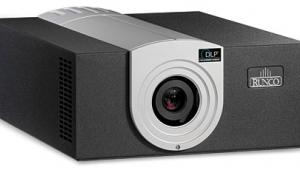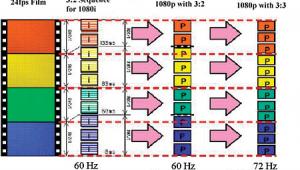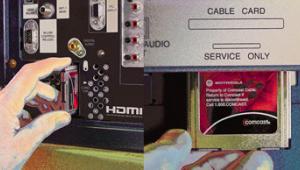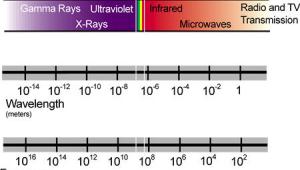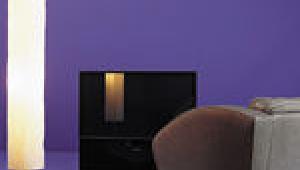Viewing Distance vs. Resolution–Round 2
In my GearWorks column in our January 2005 issue, I talked about how, depending on your viewing distance, the resolution of your display may not matter. To sum up, your eye has a finite resolution (like a digital camera), and, as objects get smaller with distance, there is a point where your eye can no longer distinguish between bigger and smaller pixels. Over long distances, this is obvious, but it surprised a lot of people that it could be so noticeable in shorter (in-room) distances.

Now we put the theory to the test with two plasmas: the Panasonic TH-42PD25 (852 by 480) from the February 2005 face off, and the LG 42PX4D (1,024 by 768) from this issue. So that you don't have to get a calculator, the LG has almost twice the number of pixels of the Panasonic. I sent both displays a component signal from a 1080i D-VHS VCR via a distribution amplifier.
I brought in both of our technical editors, two of our photographers, and one of our contributors. They sat 17 feet away and then moved closer until they were able to differentiate between the SD panel and the HD panel. Next, they were to move closer until they could see the actual pixels on each.
At a distance of 17 feet, video technical editor Scott Wilkinson, photographer Randall Cordero, and I picked the LG definitively, while the others picked the Panasonic outright. Wait. . .whaa?!?
You Kiddin' Me?
This, obviously, doesn't make any sense. According to the math, you shouldn't be able to resolve any difference between the two at a distance of 17 feet. So one of two things is possible here: Either the math is flawed, or the test is flawed. Others in the industry have tested these calculations since I first talked about them and found my theory to be true. So, if the math and science seem correct, then this test is flawed. In hindsight, I can say "and how."
In the January article, I mention that there are other factors that affect how your eyes see detail. What I didn't count on was how big a difference these actually make. The two plasmas have similar—but not identical—contrast ratios. Even though I matched the panels' brightness as closely as possible, brightness is difficult to match precisely on plasmas. When I matched the two panels' light output, the Panasonic had a better contrast ratio, which can make it seem sharper to people who aren't accustomed to overlooking such things in video. Edges, in video, are really just two different levels of gray next to each other. When you look at it this way, a display with a better contrast ratio (and, therefore, a more noticeable difference between different levels of gray) would seem to be sharper. Had I left the LG as it is normally set up, it would have been brighter (and had a better contrast ratio), and it most likely would have been the one that everyone viewed as sharper.
To complicate matters even further, scaling is hugely important. Good scaling and downconversion can make edges appear sharper, resulting in more apparent resolution. In this case, the higher-resolution display had better scaling, so its edge over the Panasonic became more pronounced. For what it's worth, at about 10 feet (the distance most people sit from their TV), everyone picked the LG as the higher-resolution display.
Like real-world science, a failure teaches as much as—if not more than—a success. From this test, we can extrapolate that other factors influence apparent video resolution in a way that is almost as significant as the display's actual resolution. In order to milk this idea as much as possible, in a few months, I'm going to re-test, this time with two plasmas from the same company with as close to the same electronics and glass as possible. This will hopefully equalize the playing field, and we can get some more isolated results.
- Log in or register to post comments






